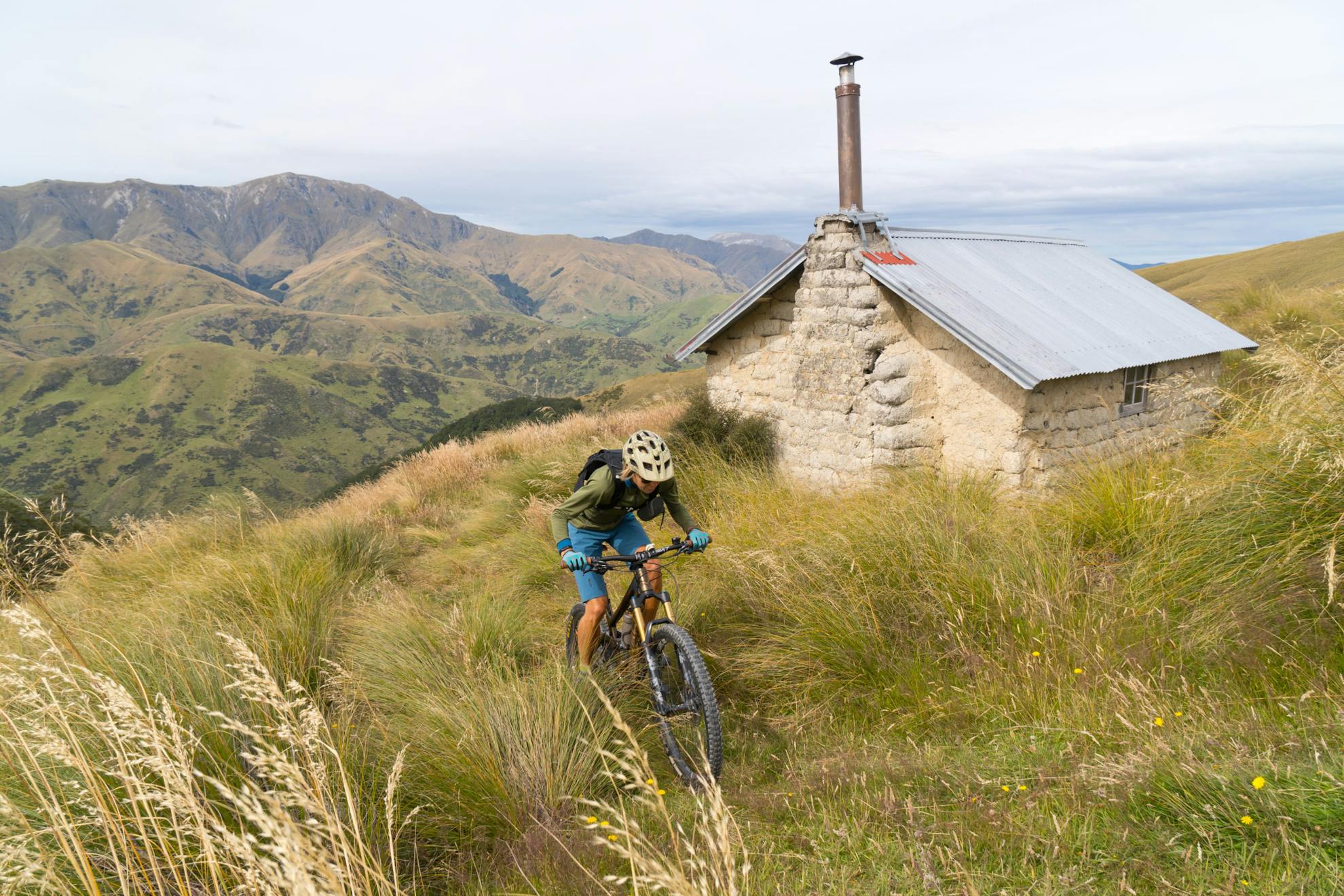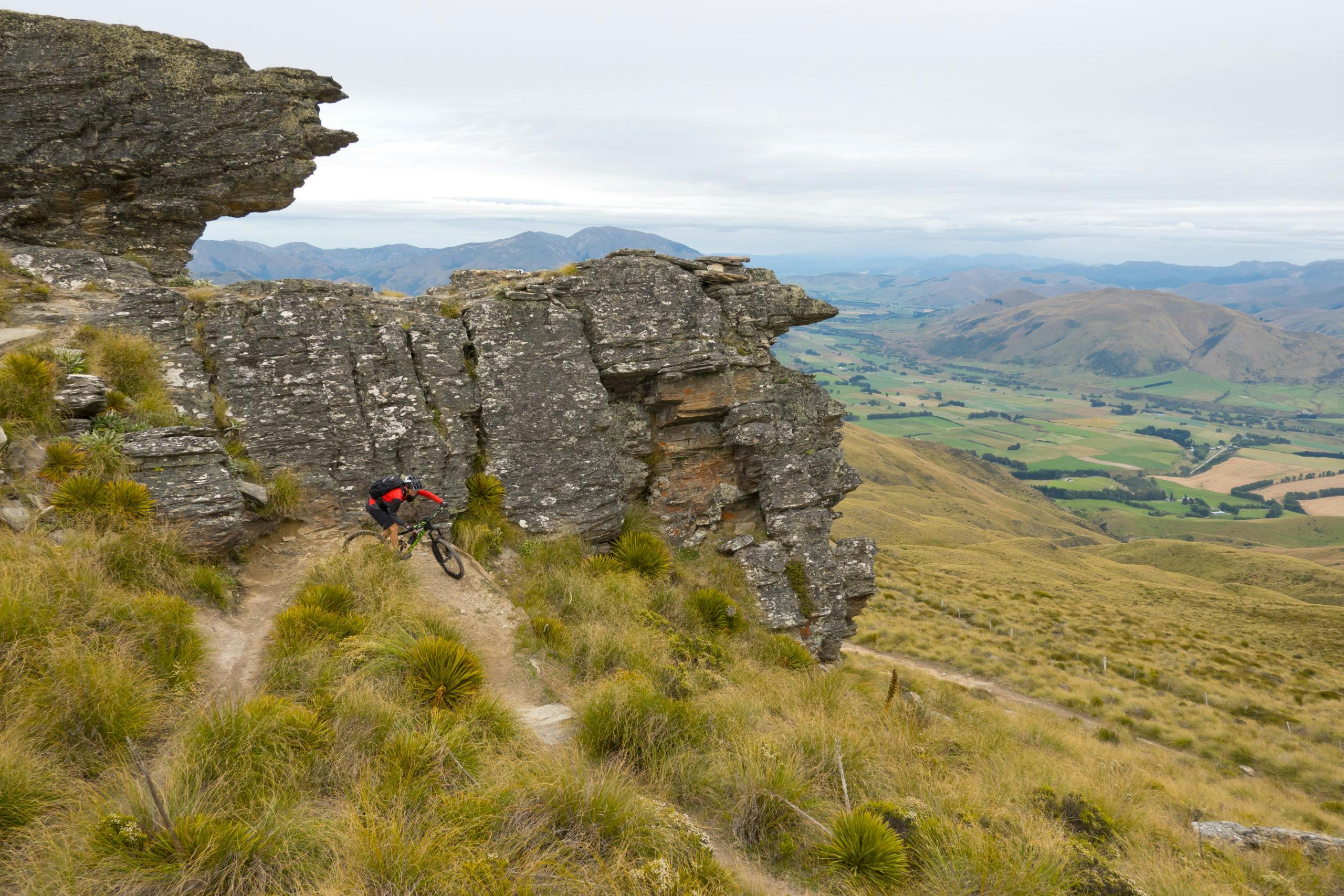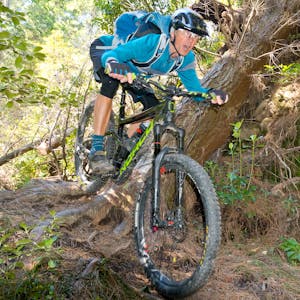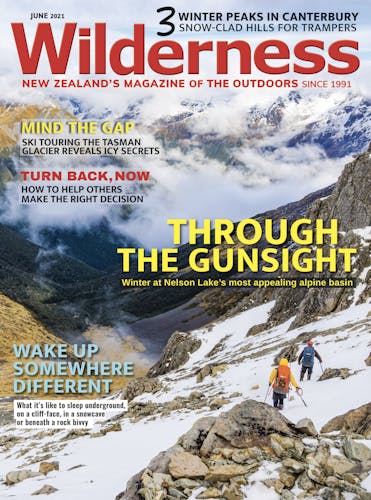The Roaring Lion Trail near Queenstown offers fantastic old-school grade three riding and stunning views.
The Roaring Lion Trail is a 27km hand-built high country mountain biking and walking track that wends its way around the spectacular snowgrass and spaniard-covered ridges at the southern end of the Hector Mountains.
As a privately built and maintained trail on Blackmore Station, there is an access fee of $20/person and an option to book the trail huts for a quiet night in the high country. Both huts have gas cooking and heated outdoor baths that are particularly good for an evening of star gazing.
We motored 8km up Nevis Road from just north of Garston to park at the historic Garston Ski Hut. Legend has it that the hut’s location came about when the truck carrying its components broke down. This rambling corrugated building looked weather-tight and inside there are comfy bunks and a fireplace. It’s ideal if a shelter from a storm was needed, or maybe a base camp for ski touring when the snow comes calling.
The track starts behind the hut and climbs slowly up the Slate Range to Welcome Rock at the highest point of the trail at 1130m. It’s old school single track, built with a pick and shovel, just like the old gold miners and water race builders used, and just wide enough to flow with the terrain and fit unobtrusively between spiky spaniard and tall tussock. It rolls on pure dirt with natural schist pavers installed over soft sections and through side streams with a gradient never too steep to pedal.
From Welcome Rock, we bombed down to Slate Hut to inspect the accommodation and outdoor bath. Just add hot water and wait for the sun to set.

From the hut, the trail slowly descends a long ridge to eventually reach the Roaring Lion Water Race. Hand built in 1898, this was a marvel of Victorian engineering and channeled water in quantity from the Nevis Valley to the Nokomai Goldfields. The 41km race was built over three long years by a gang of 30 hard grafters. It was a massive task and the subsequent maintenance drove two companies to bankruptcy.
The track has been beautifully built along the edge of what remains of the water race with views into the Nokomai River where large remnants of beech forest hug the gullies and carry on up to sections of the water race in favourable places.
We soon arrived at Mud Hut, a labour of love restoration of a hut used by the water race construction crew. This also sleeps four and has an outdoor bath to lounge under the stars in.
We continued down the water race, climbing to where it changes levels to match the broken terrain and eventually descended a slip face to the remains of an ingenious section of large riveted pipes that once diverted the water over this moving slip. Much still remains and a long row of up-standing shovels provides a fitting tribute to the enterprise. The water this race supplied to the goldfield released untold riches via its massive hydraulic sluicing.
Lee Lum’s derelict sod hut is just a few kilometres farther on with only the foundation remaining. Just before the Nevis Valley Saddle, an old supply cart is parked up beside the trail. Its resting spot commands an excellent view.
We headed for the saddle and finished lunch in the sun before the final push to Nevis Road and back to the Historic Ski Hut.
It was a magic ride thanks to the hard work put in by station owners Tom and Katie O’Brien and their group of trail building volunteers.
- Distance
- 27km
- Total Ascent
- 1292m
- Grade
- Moderate / Difficult
- Access
- Nevis Road just north of Garston
- Map
- CD11 Kingston
GPX File
- Roaring Lion Trail (gpx, 25 KB)
GPX File
- Your device does not support GPX files. Please try a different device.








